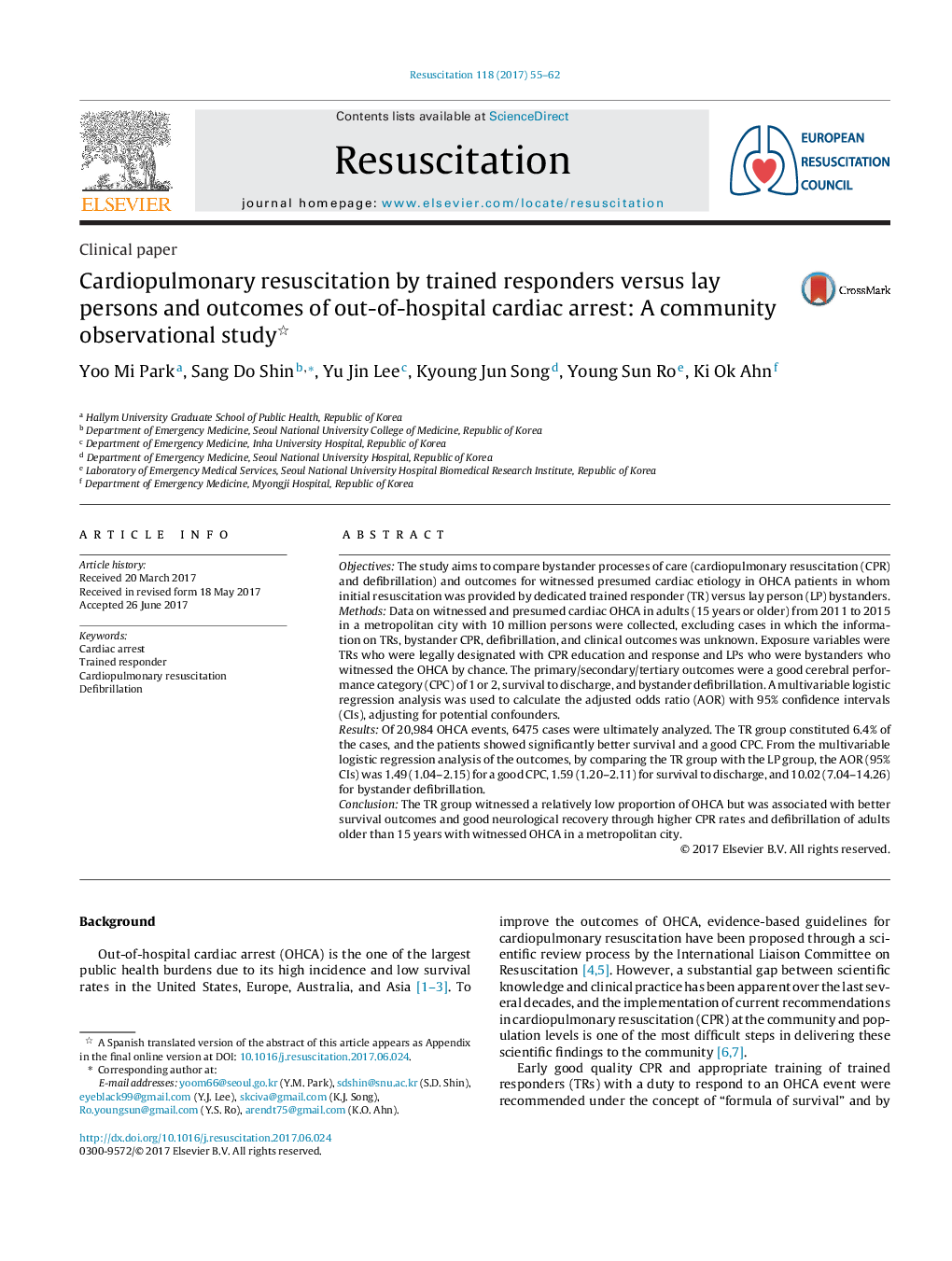| کد مقاله | کد نشریه | سال انتشار | مقاله انگلیسی | نسخه تمام متن |
|---|---|---|---|---|
| 5619826 | 1578966 | 2017 | 8 صفحه PDF | دانلود رایگان |
ObjectivesThe study aims to compare bystander processes of care (cardiopulmonary resuscitation (CPR) and defibrillation) and outcomes for witnessed presumed cardiac etiology in OHCA patients in whom initial resuscitation was provided by dedicated trained responder (TR) versus lay person (LP) bystanders.MethodsData on witnessed and presumed cardiac OHCA in adults (15 years or older) from 2011 to 2015 in a metropolitan city with 10 million persons were collected, excluding cases in which the information on TRs, bystander CPR, defibrillation, and clinical outcomes was unknown. Exposure variables were TRs who were legally designated with CPR education and response and LPs who were bystanders who witnessed the OHCA by chance. The primary/secondary/tertiary outcomes were a good cerebral performance category (CPC) of 1 or 2, survival to discharge, and bystander defibrillation. A multivariable logistic regression analysis was used to calculate the adjusted odds ratio (AOR) with 95% confidence intervals (CIs), adjusting for potential confounders.ResultsOf 20,984 OHCA events, 6475 cases were ultimately analyzed. The TR group constituted 6.4% of the cases, and the patients showed significantly better survival and a good CPC. From the multivariable logistic regression analysis of the outcomes, by comparing the TR group with the LP group, the AOR (95% CIs) was 1.49 (1.04-2.15) for a good CPC, 1.59 (1.20-2.11) for survival to discharge, and 10.02 (7.04-14.26) for bystander defibrillation.ConclusionThe TR group witnessed a relatively low proportion of OHCA but was associated with better survival outcomes and good neurological recovery through higher CPR rates and defibrillation of adults older than 15 years with witnessed OHCA in a metropolitan city.
Journal: Resuscitation - Volume 118, September 2017, Pages 55-62
